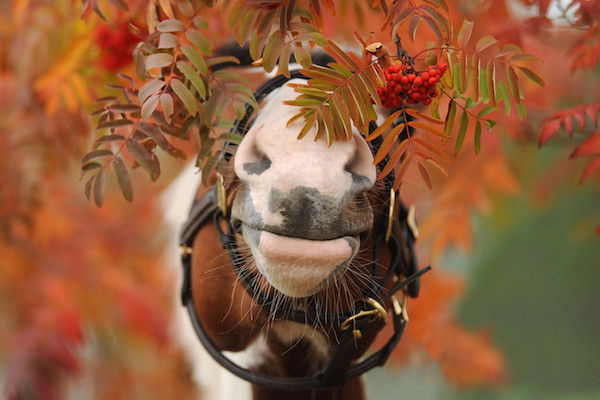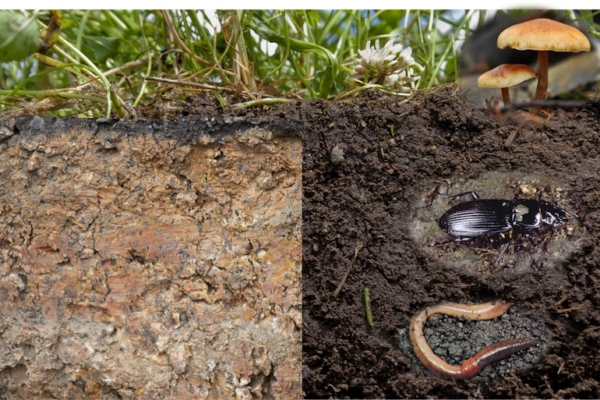Foraging behaviour in pastured horses: Is variety the spice of life? | Horses and People.
Australian researchers investigating the behaviour of domestic horses at pasture have found that, given the opportunity, horses will seek and consume a range of non-pasture species (e.g., parts of trees, woody plants and shrubs). This is the first published data on the behaviour of domesticated horses at pasture and their interaction with the available vegetation. Prior to this study, information was limited to ecological and conservation studies of feral or free-roaming horses in open ranges.
The study by a research team from the University of New England, NSW, details the results of a survey designed to gather information on horse-management practices and the horse owner’s observation of browsing behaviour in Australian horses kept on pasture.
A questionnaire was distributed to horse owners across all states of Australia and respondents supplied details about the husbandry and feeding management of their horses, including number of horses owned or managed, housing and property size, workload of the horses and supplementary feeding practices. They also collected data on the total hours horses had access to pasture, the estimated size of grazing areas, the type of pasture or land problems encountered (e.g. overgrazing, weeds, erosion, compaction, water logging, salinity).
If horses had access to pasture, respondents were prompted to provide information about the presence of trees and shrubs directly in or around the pasture areas, the ingestion of vegetation other than grasses and legumes by horses (e.g. evergreen trees, deciduous trees, coniferous trees, shrubs, water plants, forbs, ferns, mosses or lichens, and other browse species), and specify the parts of the plant consumed (e.g. leaves, twigs, bark, flowers and roots). In addition, questions were asked about owner’s observation of specified behaviours such as bark chewing, eating or licking sand or dirt, pawing the ground, crib biting or wind sucking, excessively licking objects, pacing paddock or boundary fence, grinding teeth, weaving or other behaviours. The researchers also asked questions regarding the circumstances associated with those behaviours (e.g. pasture, stable, feeding or other circumstances).
The survey forms part of a broader PhD project for equine nutrition consultant and regular contributor to Horses and People Magazine, Mariette van den Berg. “We know that free-roaming horses’ diet contains a substantial amount of browse and that horses are adapted to eat non-pastured species and woody plants” says Mariette, “but it had not been studied or quantified previously for domesticated horses. Our survey served to establish that domesticated horses show a variety of foraging behaviour and that, given the option and when vegetation is available, horses will seek and consume a range of non-pasture species. What is not clear” continues Mariette, “is the motivation to ingest a variety of plants”.
One of the interesting findings is that about a quarter of the surveyed horses showed bark chewing and licking or eating dirt behaviours, and the big question for researchers is whether in pastured conditions these horses are displaying healthy, natural behaviours, seeking nutrients or showing boredom – in other words, is it of benefit to their physiology or a display of stereotypic behaviour?
Stereotypic behaviours (repetitive behaviours with no obvious function such as windsucking, crib biting and weaving) are considered a coping mechanism induced by frustration or conflict. Bark chewing has a close resemblance to wood chewing (chewing fencing rails or stable doors), a behaviour that is considered stereotypical in stabled horses, and Mariette argues that in pastured horses, this type of behaviour could be a grey area – i.e., horses may get some fibre or other nutrients from the bark, but the behaviour itself could also have a hedonic effect (the repetitive action can have a pleasurable effect due to the release of hormones such as endorphins).
“My main interest” says Mariette, “is understanding the post-ingestive feedback mechanisms and the role that taste and smell have in diet selection, particularly with forages. We assume that Australian pastured horses are well-off, but this survey is the first step to show if this foraging behaviour is natural and beneficial or if, in certain circumstances (i.e., where the pasture may be compromised by, for example, low pasture availability), it actually has a stereotypical nature.”
This survey confirms that although we have taken the horse out of its natural environment, it is still motivated to eat a variety of forages and shows a complex foraging behaviour while at pasture. This new-gained knowledge is helping the research team progress with their main interest, to further the understanding of mechanisms by which horses make diet choices.
For more detailed results read the article titled Browse-related behaviours of pastured horses in Australia: A survey, by Mariette van den Berg, Wendy Y. Brown, Caroline Lee and Geoffrey N. Hinch, published in the Journal of Veterinary Behavior. The abstract is freely available online here.



